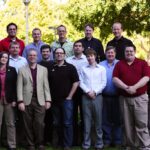|
|

Mark Denny presented for Cisco Mobility at WFD3 |

This video is part of the appearance, “Cisco Presents at Wireless Field Day 3“. It was recorded as part of Wireless Field Day 3 at 13:30-15:30 on September 14, 2012.
Watch on YouTube
Watch on Vimeo
In this presentation, Mark Denny, the Wireless Business Unit Product Line Manager at Cisco, provides an in-depth overview of the 802.11ac specification and Cisco’s strategy for its market introduction. Recorded on September 14, 2012, at Wireless Field Day 3, Denny discusses the advancements and features of the 802.11ac technology, emphasizing Cisco’s proactive approach in developing and testing the technology in parallel with client devices. He highlights the importance of early adoption and collaboration with various vendors and chipset manufacturers to ensure a smooth rollout and interoperability of 802.11ac devices.
Denny explains that the 802.11ac module, designed for the Cisco 3600 access point, represents the first wave of the new Wi-Fi technology. This module supports a 1.3 Gbps PHY rate, 256 QAM, and up to 80 MHz wide channels, with three spatial streams and explicit beamforming capabilities. The module operates independently with its own 5 GHz radio and integrated antennas, allowing it to function concurrently with the existing 5 GHz radio in the access point. This setup enables the simultaneous operation of both radios, with the integrated radio handling legacy 802.11n clients and the new module dedicated to 802.11ac clients. Denny also mentions the power requirements for the module, noting that it exceeds the standard 802.3af power but remains within the capabilities of Cisco’s enhanced PoE switches.
The presentation also touches on the anticipated use cases and deployment strategies for 802.11ac. Denny notes that while some customers may initially deploy the technology in specific high-demand areas, such as radiology labs or large auditoriums, others may opt for a more pervasive network upgrade. He emphasizes the potential benefits of 802.11ac in terms of higher throughput, increased device density, and improved network efficiency. The discussion includes a live demonstration of the 802.11ac module’s performance, showcasing its ability to achieve significant throughput even in a real-world environment with interference. Denny concludes by highlighting the ongoing efforts to refine the technology and the excitement surrounding its potential impact on wireless networking.
Personnel: Mark Denny










